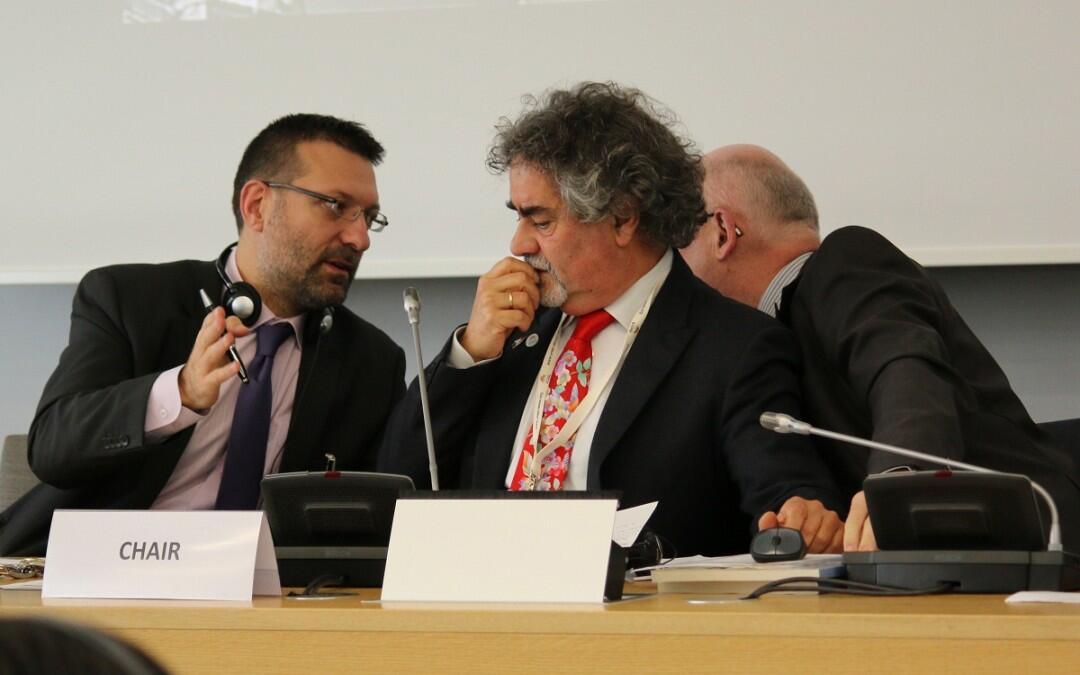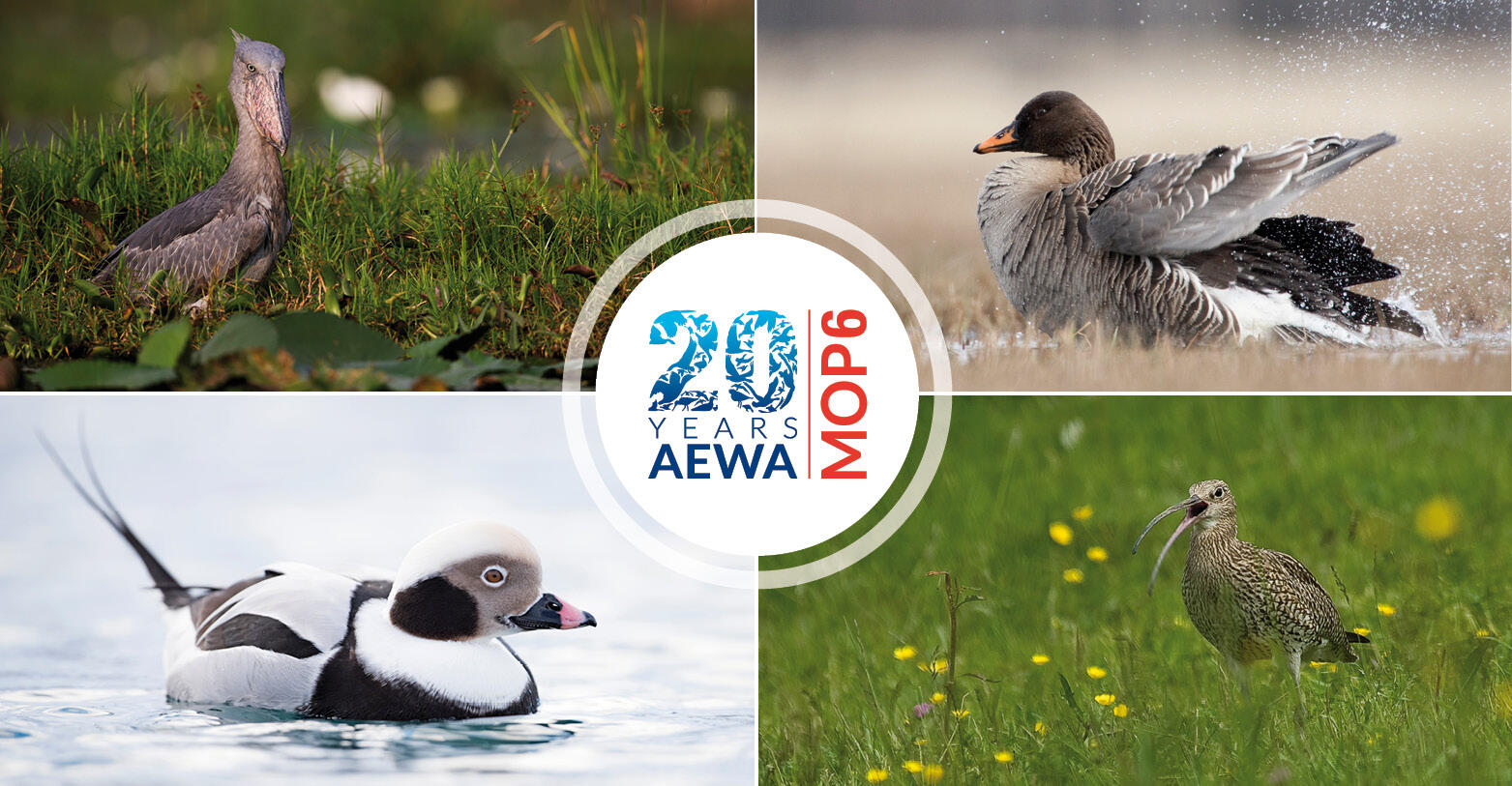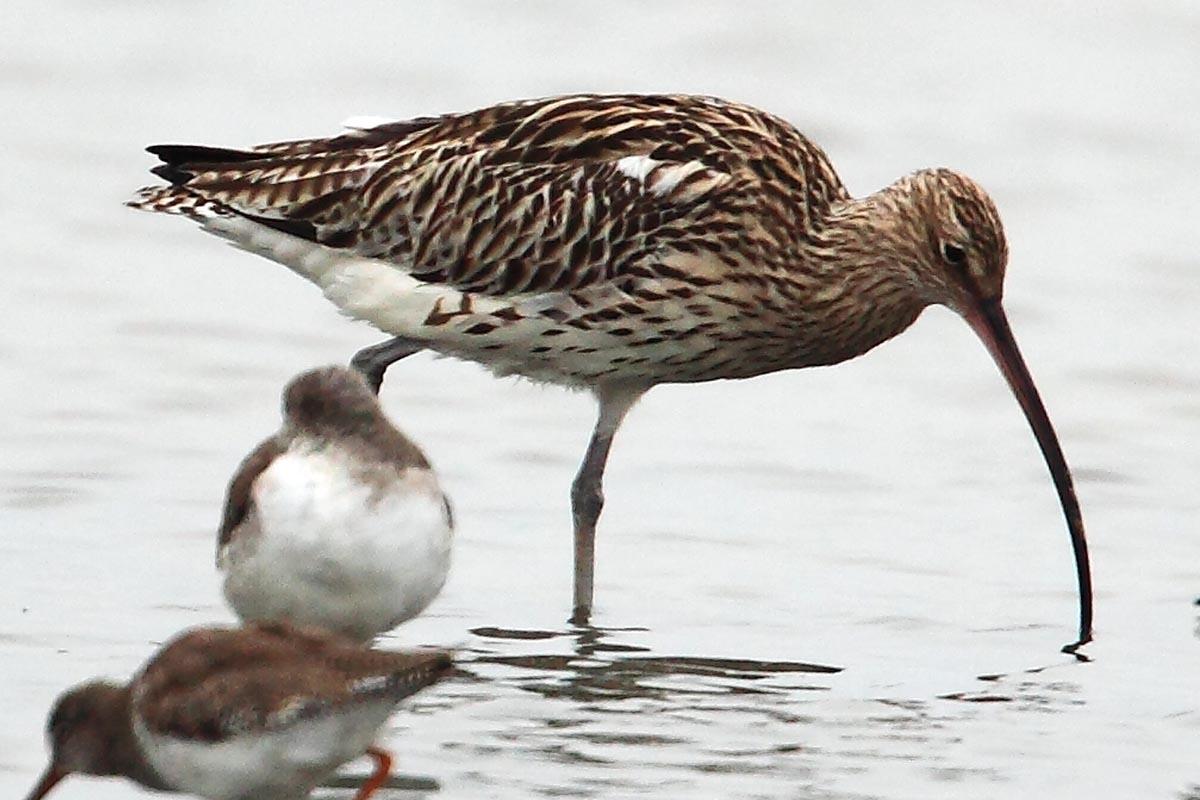The Sixth Session of the Meeting of the Parties (MOP6) to the UNEP- administered Agreement on the Conservation of African-Eurasian Migratory Waterbirds (AEWA) held from 9 – 14 November at the United Nations Campus in Bonn concluded in Bonn on Saturday following a week of negotiations. In total 22 resolutions including action plans for priority species including highly threatened seabirds and guidelines for the sustainable use of waterbirds were adopted as part of a set of concrete conservation actions which will benefit migratory waterbirds across Africa and Eurasia for the coming years. Migratory waterbirds such as storks, ducks, geese as well as the African Penguin are especially vulnerable to a wide range of threats along their often long migration routes across Africa and Eurasia. By implementing AEWA, countries contribute to achieving the Sustainable Development Goals (SDGs), which were agreed at the UN-Summit on Post-2015 in September. This refers to actions to reduce biodiversity loss; address illegally taking, killing and trade, protection and restoration of habitats; helping birds adapt to climate change; education; capacity development; contributing to food security and poverty reduction through the sustainable harvesting of waterbirds. AEWA forms a bridge between Eurasia and Africa, which is indispensable for the conservation of transcontinental migrants. The objectives of the EU Birds Directive adopted in 1979 cannot fully be achieved if actions are limited to just the political dimension. AEWA allows concerted actions to be launched throughout the flyway which extends from Russia to South Africa; however, the pressures on the birds vary from north to south. Our actions are based not only on the best scientific expertise but also on reconciling human well-being with biodiversity conservation because without the support of local communities we cannot success. The conservation of nature requires both scientific knowledge and involvement of human societies. It explains the focus on Africa through the African Initiative of the Agreement adopted 3 years ago”, said Jacques Trouvilliez, Executive Secretary of AEWA More than 200 representatives from Parties, observer states, IGOs, NGOs and key experts attended the conference to guide future conservation efforts for migratory waterbirds across the African-Eurasian Flyway. AEWA was concluded 20 years ago under the auspices of the Convention on the Conservation of Migratory Species of Wild Animals (CMS); it is its largest legally binding agreement under the Convention to date. Seabirds Seabirds are among the most threatened group of birds in the word. For the first time in AEWA history, an action plan for nine species of seabirds including the African Penguin involving the countries Angola, Namibia and South Africa has been adopted. “Seabirds are sentinels of ocean health and some are signaling distress. Concerted, coordinated and collaborative efforts are required to save our seabirds and thereby secure our oceans”, said Dr. Ross Wanless, Africa Coordinator of the Global Seabird Programme of BirdLife South Africa, who co-authored the Review of the Status, Threats and Conservation Action Priorities for the Seabird Populations Covered by the Agreement and the Review of Potential Impacts of Marine Fisheries on Migratory Seabirds within the Afrotropical Region, which was presented at MOP6. The conservations status of seabirds has deteriorated faster than any equivalent group of birds. Fisheries represent a substantial risk: Seabirds drown as bycatch in longlines; overfishing causes a lack of prey. In addition, they are threatened by invasive species on islands, ingestion of micro plastics, offshore wind farms, oil spills, disturbance at breeding sites, harvesting and climate change. As a response, countries agreed to establish and complement a network of marine protected areas. They support decisions taken by the United Nations Environment Assembly (UNEA1) on marine debris and the UN Food and Agricultural Organization to comply with regulations to protect seabirds, as adopted by Regional Fisheries Management Organizations. Inexpensive modifications in fishing gear has proven to significantly reduce accidental mortality. Action Plans Implementing conservation measures in Europe is not enough if migratory waterbirds continue to face threats in Africa. Conservation actions need to cover all the critical habitats which migratory waterbirds need to survive along their migration routes. “Waterbird conservation in Africa is linked to improving the livelihoods of people. We cannot just assume that the same level of capacity for wetland management and monitoring of our shared waterbirds exists across the Flyway” said Abdoulaye N’Diaye, CoordinatorTechnical Support Unit to the African Initiative of AEWA and the winner of the 2015 AEWA Conservation Award which was presented to him during the meeting. The Wadden Sea Flyway Initiative (WSFI) launched in 2012 aims to increase capacity for migratory bird conservation and monitoring along the East Atlantic Flyway – the migration system stretching the entire coastlines of Africa all the way up to northern Europe and Russian. The WSFI network came together for a full day in the margins of AEWA MOP6 to discuss future plans for this promising initiative. The AEWA Plan of Action for Africa lists priority species, which need urgent protection. At the conference, action plans were adopted covering six priority species, of which three occur only in Africa. These include action plans for Uganda’s national bird, the endangered Grey Crowned Crane, which has suffered a decline of 80 per cent over the past 45 years. Kerryn Morrison, Program Manager of the African Crane Conservation Program said: “It is a fantastic action plan which really brings together governments across the range of the Grey Crowned Crane as well as NGOs, universities, interested parties and the private sector – all vital to ensuring these charismatic birds remain as icons of Africa’s wild grasslands and wetlands.” The Shoebill, which owes its name to its huge beak, is a highly coveted species in illegal live trade. In addition, habitat loss through fire to clear land for agricultures as well as disturbance by livestock and people pose additional threats to the swamp bird. An estimated 5,000 to 8,000 birds remain in the wild in eastern central tropical Africa. The action plan adopted by MOP6 will try to minimize illegal trade and reduce disturbance and habitat loss for the Shoebill, which will also benefit other species. Classified as Critically Endangered on the IUCN Red List due to its small range and population size, the red-beaked Northern Bald Ibis with its characteristic black head feathers is in danger of becoming extinct. It has suffered a serious decline since the 1950s due to habitat loss, DDT pesticide poisoning and hunting and more recently electrocution in powerlines. Only 500 birds remain in the wild today. The action plan aims to increase breeding success, reduce mortality, establish new colonies and close key knowledge gaps. The Taiga Bean Goose with a wintering population estimated at 100,000 birds in the mid-1990ies, had decreased to 63,000 by 2009. Legal and illegal hunting are the key threats. The majority of the global population overwinters in the German Baltic Sea, where it is hunted as a lookalike species to the Tundra Bean Goose. Training, monitoring and hunting control to sustainably use geese populations outlined in the new action plan can help restore and maintain viable populations. A decreasing trend of Long-tailed Duck numbers since the last 20 years in the Baltic Sea, where the majority of the global population overwinters, represents almost a 60 per cent decline in the global population size within a decade. The species is threatened by habitat degradation and oil pollution, drowning through entanglement in fishing nets and hunting. Actions to reduce bird mortality include sustainable hunting, modify shipping routes to contain oil pollution. Loss and fragmentation of moorland habitats as a result of afforestation, high egg and chick mortalities and intense agriculture are the key threats to the Eurasian Curlew. The global trend of the species is suspected to fall within the band 20-30 per cent in the past 15 years, which has justified up listing the species to Near Threatened in the IUCN Red List. The action plan aims to reverse population decline by reducing the mortality rate of adult birds and increasing breeding success. Another topic on the agenda of AEWA MOP6, was the impact of renewable energy on migratory species, including on migratory waterbirds. While renewable energy technology helps to fight the effects of climate change, it can also harm animals including migratory waterbirds if not properly installed. If located along the major migrations routes, windfarms and hydropower plants can have lethal effects. The guidelines adopted at the meeting recommend assessing the environmental impact when planning the construction of wind turbines and implementing shut-down periods during bird migration can significantly reduce bird mortality.













